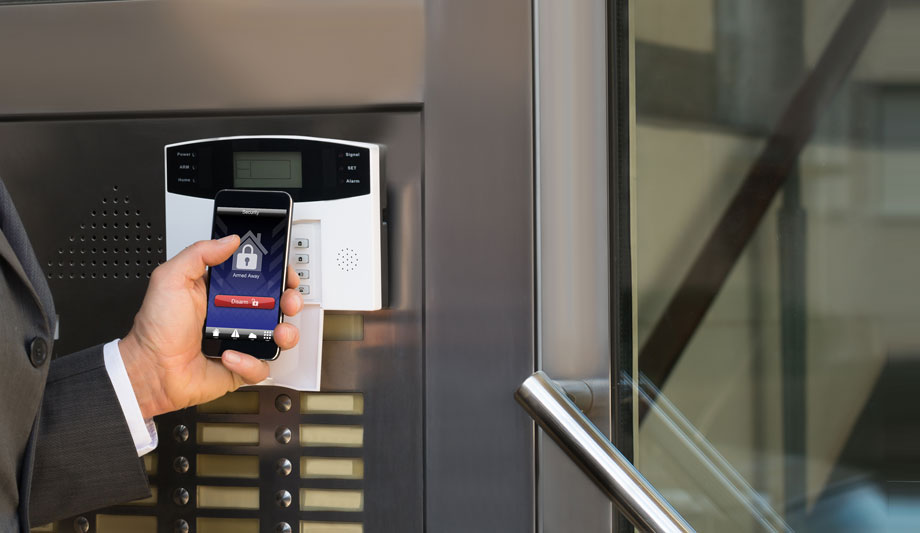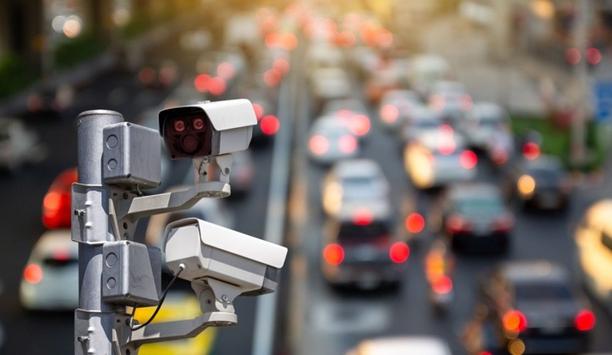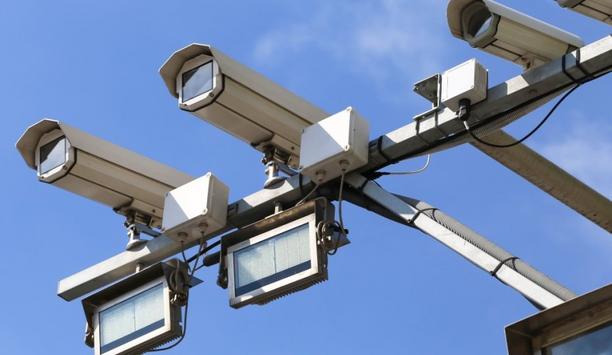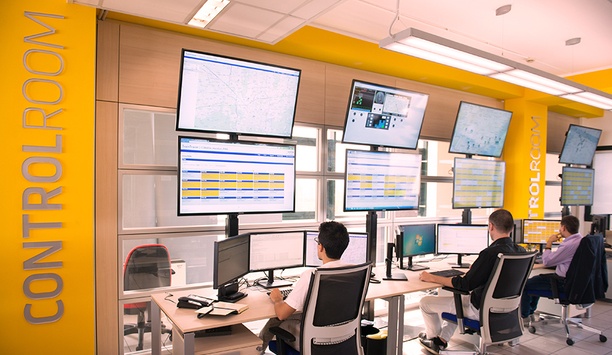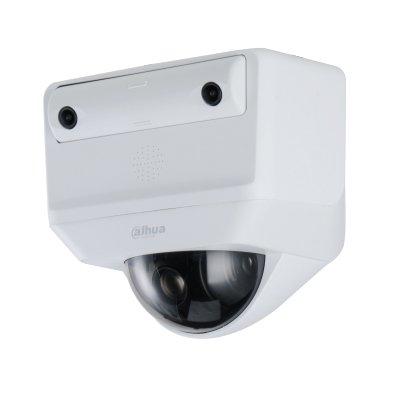Mobile access is probably the largest emerging trend in the security marketplace, but it is only one of several that are changing the face of the access control market. Another factor showing potential to change the market is the emergence of location systems and positioning systems, as reflected by HID Global’s recent acquisition of Bluvision, a provider of real-time location tracking system for assets and employees, and building information modeling (BIM) is impacting how consultants do their jobs. We gathered together several consultants, and a representative of HID Global, to discuss these topics.
Participants were Chris Grniet of Guidepost Solutions, Brandon Frazier of Elert & Associates, Terry Harless of Burns & McDonnell, and Harm Radstaak, HID Global’s Vice President and Managing Director, Physical Access Control.
Future of mobile access technology
SourceSecurity.com: How is mobility affecting end-user implementations and the way you consult? How has Mobile Access technology affected the way you approach projects?
Chris Grniet: I don’t think I am designing a single project now where we are not using a mobile credential. But the industry has been transitioning slowly to frictionless access. We looked at it 20 to 30 years ago, when we started looking at asset tracking with RFID and antennas around doors, and all of that. We are starting to see new products emerge from HID and others for personnel tracking. I think our society has progressed, and we understand that the electronic component of our lives is attached to us – not embedded yet, but attached. Everybody has that electronic device, and it’s making it a lot easier. We have implemented products for mobile credentialing for large corporations. We are really looking forward to the visitor management component of that. It will make visitor management so much easier. We need to keep it affordable. But it’s going to be there. I am designing projects now with 20 to 30 turnstile entrances to a headquarters building. We are putting in visitor management kiosks. I don’t want a single visitor to have to use those at the end of the day. I want to push the credentials out. Unless they weren’t registered, they should be able to walk through the door because they are a trusted individual. We’re moving toward frictionless access, and that’s a big component of it.
Terry Harless: Personally, I haven’t had any projects that use any mobile applications as of yet. I have tried to design them on a couple of projects as an alternate, mainly at tech-heavy firms where they understand technology. For the most part, it has always been value-engineered out because of the price, and also because some of these are smaller companies. Some of the mobile applications have larger licence packs, for a hundred or more licences. That’s my experience.
| "I think we have yet to see the advantages; people are still imagining what the full potential is of location services" |
Brandon Frazier: One of my biggest verticals is higher education. I really see mobile credentials being big in that space. I see students, and they have their phones and a little holder in the back for credit cards, and that’s it. That’s all they have. I think the idea of carrying another student ID won’t fit in the phone. I really see very specific verticals having great benefits from mobile. In terms of master planning, I have seen the cost of entry as being very expensive: the cost of replacing readers, the cost of replacing downstream devices. But if I’m doing large projects, I am always spec’ing in at least the mobile infrastructure, so they can add the credentials later.
Harm Radstaak: It’s fair to say we have learned a lot as HID in the mobile access space. As a supplier, our operational model behind the scenes has completely shifted from producing a card, encoding a card, shipping a card. Now we are issuing over the air, revoking over the air. Our IT infrastructure and the way we serve end users though our IT infrastructure has had substantial investments. Moving into the mobile access space, the requirements are higher. Is it residing in the cloud? How are we going about compliancy, privacy, security? More important, if it’s residing on your phone, questions are being asked by end users. How trusted is this? All these areas are important for HID. That’s on the operational model. The other challenge we have is the variety of phones across the world. There are development challenges to support a substantial portion of the phones worldwide, and all the diverse operating systems.
Challenges and benefits of location services
SourceSecurity.com: What are your thoughts on location services / indoor positioning services?
Grniet: Indoor positioning services should be integrated into a security platform that is pre-existing in an environment or will be deployed in an environment. There are plenty of location type services out there, whether in hospitals or factories. The signals have to be right, what we’re using as a tracking device has to be right, etc. I see some of the legacy systems laying to waste because it’s an extra set of management tools. So you need integration into the pre-existing or future systems to be deployed. We need to get everything fully integrated in a unified fashion, so we are operating on a single platform without an extraneous management platform. I think we have yet to see the advantages; people are still imagining what the full potential is of location services. It’s going to play into facility usage, area usage, safety, security, mustering; all of those things are going to be very important.
Frazier: I see a lot of potential in specific verticals and employee groups. Let’s use guards as an example: The real-time ability to locate a guard, associate that with nearby assets, using analytics, tying data together, aggregating it, putting that to a body and being able to provide a faster response time. I see that coming, but I think the cost of entry will be too high. I used to do a lot of work in healthcare as well, and the cost of entry is extremely high in tracking services. So we need to find a better way to do it. GPS is great; I don’t know if you can get that in buildings. Adding sensors every 20 feet, triangulation, it’s just not the best solution.
Grniet: With GPS we still have the height issue, especially in tall commercial buildings. So I can tell where you are on the X and Y coordinates, but not on the Z axis. That’s a big challenge. So having that built into a facility, then we can talk about asset security and asset tracking. That will be the fundamental component of how we sell it to the security side of the business.
Radstaak: I think it’s fair to say HID is very excited about location services. It’s one reason we went out to acquire a company like Bluvision. It’s not GPS, but Bluetooth Low Energy (BLE)-enabled location services. This ties into a couple of things we discussed before. You can look at it from a space utilisation perspective or workplace optimisation, or sustainability, for cost savings in a large corporation. We have had discussions in the pre-acquisition phase about how it would fit with our portfolio and our offerings. HID can provide additional physical and security services. For us, it’s a natural extension.
Harless: My experience is in the correctional field, where we have been using [indoor positioning] for 10 to 15 years, either for officer safety or tracking inmates. It hasn’t necessarily been very accurate. You know when a guy walks into a room because you have a detector above the door. The more expensive ones were triangulated, but they were very pricey and unaffordable unless you had some sort of funding. It has been around, and I am glad they are working it into some of the commercial spaces now. It could be very useful.
 |
| Indoor positioning services should be integrated into a security platform that is pre-existing in an environment or will be deployed in an environment |
BIM applications and trends
SourceSecurity.com: What are your thoughts on building information modeling (BIM) processes and how important are they for consultants?
Radstaak: As a supplier, we see it as an increasing request and requirement in the consultant space – some regions lead more than others. In the United Kingdom, all critical mass infrastructure projects have to be specified based on the BIM model. So HID and Assa Abloy have invested quite substantially over the last few years in making our products compatible with BIM modeling. We support it with tools such as Assa Abloy Openings Studio. As a supplier, we see it as an important trend and a way we can support the consultant market.
Harless: For a consultant, it helps tremendously in a couple of ways. First of all, we can pull our building materials straight out of the model. Another thing is, a lot of architects and owners like to walk through buildings and look what’s on the ceilings, on the walls. When you are showing them where the cameras and card readers are going to be (in a BIM model), it’ll give the architects a good idea of what they are going to see when the building actually gets built. They can tell us where to move stuff.
Grniet: To that end, the inception of BIM wasn’t about 3D modelling in CAD, it was about tracking of assets, and understanding everything that was on the ground. It has taken us into: Where are the intersections on construction, so we don’t have pipes running where ducts should be, and is my security equipment going where glass is? If you couldn’t read the plans, we have a BIM model to show you. You talk about seeing what a building will be like, but clients have a hard time envisioning that, seeing beyond the paper, because they are focused on another business – that’s not what they do. So we are utilising some of the tools being provided out there by firms like HID to put the toolkit for BIM modeling in there. We’re also using it for camera focusing. It helps me get a better idea of what I’m going to see in my final product and then show the client. This is why we are focusing a camera in this area. It goes back to sustainability, asset tracking, maintenance, all those things we have talked about under other product categories.
"The future will be security of your software, security of your credentials and your card readers" |
Frazier: When BIM is properly implemented, it has made our workflow very efficient. We have found it has been very helpful in our personal design, as Chris said. When we are trying to model a camera, we can see the space. But as a project team architect, if it is not properly implemented or misunderstood, it has created a lot of extraneous tasks for us. And has made us very inefficient. Some people are very good at it, and the process goes really well. Other times we find people concentrate too much on collisions and it doesn’t end up like that in the field, or we design it one way and it ends up another way. It’s very helpful to us in our personal design, but as a project team, it can cause difficulties.
Grniet: Just to add on to that point: We are still having trouble making the companies that manufacture BIM systems understand security’s role in the overall process. It’s easy for an architect to say I have strikes and hardware sets in my BIM model, but it’s under the architectural model. Security lies in this middle ground. We’re electronics, we’re low-voltage. The intersections, the toolkits, everybody’s got a great Revit model of their product, but it’s not in any of the toolkits. We have to build our own. The industry as a whole has a challenge to find the right place to be. Some people are using the MEP (mechanical, engineering and plumbing) model for Revit, some people are using the architectural model. But we have to build our own toolkits, so it’s still a challenge.
Harless: At Burns and McDonnell we have it a little easier because we work with our internal architects. So we do have those tools actually built in-house. When we go to an outside or a third-party architect, to MEP firms, we have the same issues. Sometimes they will delete ceilings or walls instead of moving them, and then we have stuff all over the place.
Future trends for physical access and identity technology
SourceSecurity.com: What do you think the identity technology industry as a whole should pay attention to over the next one to three years? What is your vision for the future in physical access or the office space of the future?
Grniet: It’s about convergence of multiple areas of business, security of that convergence, the identification and the operability, and unified platforms to allow single vision, reduced resources and fully effective control and management of security, life safety, building management, you name it.
Frazier: To sum it up: Cybersecurity and unification will drive migration basically. We need a more cybersecure solution, which will drive migration to other solutions, and that’s when conversations about global, logical security, what else can I do with this? Single sign-on. The big picture will drive a lot of this.
Radstaak: The consolidation of technology from different industries will be substantial. It could come from the IT infrastructure, it might come from identity providers who are not currently operating in the security space. I think we currently don’t see yet the substance and the impact of the data analytics and how we can use that in security and broader applications. The services component will be substantial.
Harless: The future will be security of your software, security of your credentials and your card readers. And integration, integration, integration.
Grniet: And let’s not forget frictionless access.
